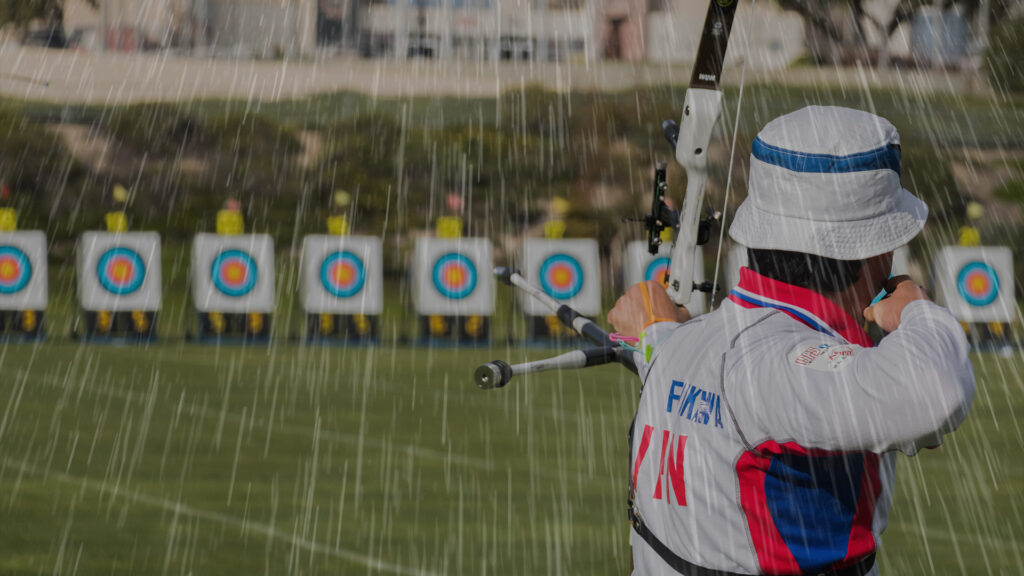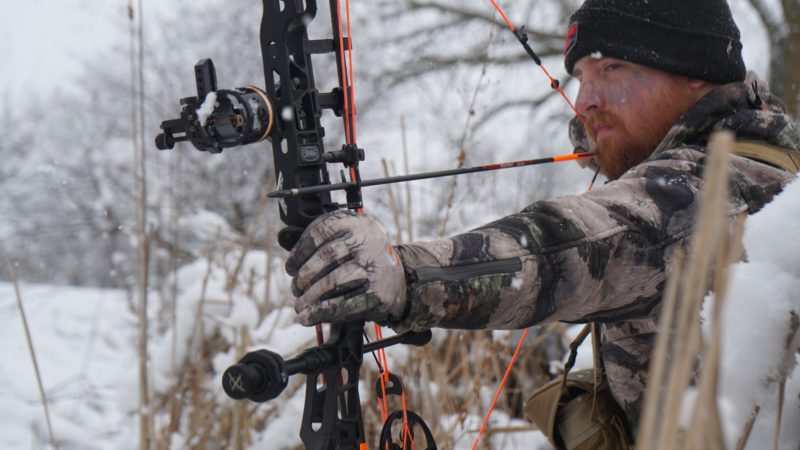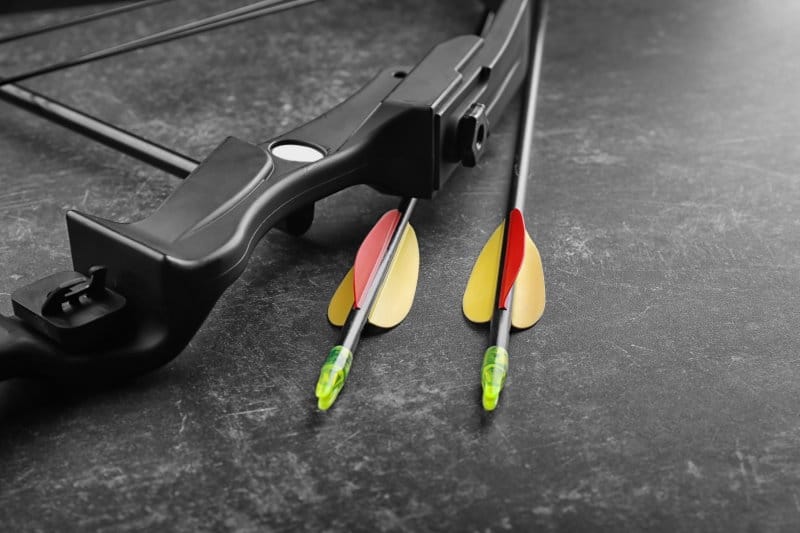
In the world of archery, weather conditions play a significant role in the performance of the equipment. From the scorching heat to gusty winds and pouring rain, each weather element presents its own challenges for archers. Whether it’s the accuracy of the bow or the flight of the arrow, this article explores how weather conditions can impact archery equipment and what measures can be taken to mitigate these effects. So, grab your bow and arrow, and let’s decipher the intricate relationship between weather and archery equipment. It’s time to aim high, regardless of the weather!
Temperature
Effects of Cold Temperature
Cold temperature can have several effects on archery equipment. Firstly, it can cause the strings on your bow to become stiff and brittle, which can lead to decreased accuracy and potential string breakage. Additionally, the cold temperature can cause the limbs of your bow to become less flexible, resulting in a decrease in overall performance. It is important to keep your equipment warm in colder temperatures to prevent these issues from occurring. You can use a bow case or even hand warmers to help maintain the flexibility of your bow and extend the life of your strings.
Effects of Hot Temperature
Just like cold temperatures, hot weather can also impact your archery equipment. High temperatures can cause the limbs of your bow to become more flexible, potentially leading to erratic arrow flight and reduced accuracy. The excessive heat can also cause the bowstring to stretch, resulting in a loss of power and a decrease in overall performance. To mitigate these effects, it is crucial to store your equipment in a cool and dry place when not in use during hot weather. Furthermore, using a bowstring wax regularly can help prevent excessive stretching and ensure consistent performance.
Humidity
Impacts of High Humidity
High humidity can be detrimental to your archery equipment. When there is excess moisture in the air, it can cause the bowstring to become damp and lose its elasticity. This can result in reduced arrow speed and accuracy, as well as potential string breakage. Moreover, humidity can also cause wooden arrows to warp or bend, affecting their flight path. To combat the effects of high humidity, it is recommended to store your equipment in a climate-controlled environment, such as a dehumidified room or a storage box with moisture-absorbing packets.
Impacts of Low Humidity
Low humidity can also have negative consequences on your archery equipment. In a dry environment, the bowstring may become brittle and prone to snapping. This can greatly impact your shooting performance and potentially cause injury. Additionally, extremely low humidity can cause wooden limbs to dry out and crack, affecting the overall integrity of the bow. To prevent these issues, it is essential to regularly apply a bowstring conditioner to keep the string hydrated and avoid storing your equipment in excessively dry conditions.

Wind
Effects of Strong Winds
Strong winds can significantly influence your archery experience. When shooting in windy conditions, the wind can affect the trajectory of your arrow, causing it to veer off course. This can lead to missed shots and reduced accuracy. Additionally, strong winds can make it challenging to hold a steady aim, especially for recurve or traditional archers who rely on their own strength to draw the bow. To minimize the impact of strong winds, consider adjusting your aim to compensate for the wind direction and speed. Additionally, using a stabilizer on your bow can help provide additional stability and control in windy conditions.
Effects of Light Breezes
Although light breezes may not have a significant impact on arrow trajectory, they can still affect your shots to some extent. Even a gentle breeze can cause subtle variations in arrow flight, potentially leading to less accurate shots. Light breezes can also make it more difficult to hold a consistent aim, especially during longer distances. It is important to be aware of any slight wind movements and adjust your aim and shot execution accordingly. Utilizing a wind flag or wind indicator can provide valuable information about wind direction and help in making necessary adjustments.
Rain
Damage to Bowstring
Rain can pose a threat to your bowstring. When exposed to water, the bowstring can absorb moisture and lose its elasticity, resulting in decreased arrow speed and accuracy. Additionally, the water can cause the bowstring to become slippery, making it difficult to maintain a consistent grip and release. To protect your bowstring from rain, consider using a string silencer or a waterproof bowstring cover. It is also important to thoroughly dry your equipment after exposure to rain to prevent any long-term damage.
Impact on Arrow Flight
Rain not only affects the bowstring but also has an impact on arrow flight. When arrows get wet, they become heavier and can lose their stability in the air, leading to unpredictable flight patterns. Furthermore, rain can cause the fletching on your arrows to become waterlogged, resulting in decreased aerodynamic performance. To mitigate these effects, it is recommended to use waterproof or water-resistant fletching materials. Additionally, applying a waterproof coating to the shaft of your arrows can help prevent water absorption and maintain consistent flight.

Snow
Slower Arrow Speed
When shooting in snowy conditions, the speed of your arrows may be affected. Snow can create additional resistance as the arrows pass through it, resulting in slower arrow speeds. This decrease in speed can impact the trajectory and accuracy of your shots. To counteract the effects of slower arrow speed in the snow, consider using arrows with higher spine values or adjusting your sight to compensate for the altered flight path.
Reduced Accuracy
The presence of snow can also affect the accuracy of your shots. The snow-covered ground can provide a less stable footing, making it challenging to maintain a consistent shooting form. Furthermore, the cold temperature associated with snowy conditions can cause the limbs of your bow to become less flexible, potentially resulting in decreased accuracy. It is important to take extra care in your footing and aim when shooting in the snow, and to regularly check your equipment for any signs of cold-induced damage.
Fog
Visibility Challenges
Foggy weather can present significant challenges in terms of visibility during archery. The dense fog can make it difficult to see your target clearly, leading to potential aim errors and reduced accuracy. In such conditions, it is crucial to trust your instincts and rely on muscle memory while shooting. Additionally, using bright-colored fletching or a sight with a light source can help improve target visibility in foggy conditions.
Potential Equipment Moisture
Foggy weather is often associated with high levels of moisture in the air. This excess moisture can affect your archery equipment, particularly the bowstring. The dampness in the air can cause the bowstring to become wet and lose its elasticity, resulting in decreased performance. To prevent moisture-related issues, it is advisable to store your equipment in a dry place during foggy weather and to regularly inspect and dry your bowstring if it becomes damp.

Sunlight
Glare and Sight Alignment
When shooting in bright sunlight, glare can become a significant challenge. The glare from the sun can make it difficult to see your target clearly, affecting your aim and resulting in decreased accuracy. To combat glare, consider using a visor or wearing polarized sunglasses to minimize the amount of light reaching your eyes. Additionally, using a sight with anti-glare coatings or adjustable brightness settings can also help improve sight alignment and reduce the impact of glare.
Temperature Changes on Equipment
Sunlight can also cause temperature fluctuations that can affect your archery equipment. Prolonged exposure to direct sunlight can result in the limbs of your bow expanding and becoming less flexible, potentially leading to decreased accuracy. It is important to avoid leaving your equipment in direct sunlight for extended periods. Instead, consider using a bow case or covering your bow with a cloth to shield it from direct sunlight and minimize any temperature-related issues.
Altitude
Effect on Bow Poundage
Altitude has a direct impact on the performance of your bow. As you shoot at higher altitudes, the decreased air density can cause your bow to feel as if it has increased in poundage. This means that your bow will require more effort to pull back and achieve the same amount of energy transfer to the arrow as it would at lower altitudes. It is important to adjust your equipment accordingly and be aware of any changes in bow poundage when shooting at different altitudes.
Arrow Trajectory Changes
The change in air density at higher altitudes can also affect the trajectory of your arrows. Arrows shot at higher altitudes will experience less air resistance, causing them to fly faster and potentially have a flatter trajectory. This may require adjusting your sight or aiming higher to compensate for the altered flight path. It is crucial to understand the impact of altitude on arrow trajectory to maintain accuracy and account for any deviations caused by the change in air density.

Barometric Pressure
Influence on Arrow Flight
Barometric pressure, which refers to the pressure exerted by the atmosphere, can influence the flight of your arrows. Changes in barometric pressure can impact the density and resistance of the air, affecting arrow speed and stability. When shooting in low-pressure systems, such as during a storm, the decreased density can result in slower arrow speeds and less stable flight. Conversely, shooting in high-pressure systems, such as on a clear day, can lead to faster arrow speeds and potentially flatter trajectory. It is important to be aware of any changes in barometric pressure and make necessary adjustments to your shooting technique and equipment to maintain consistency and accuracy.
Equipment Deterioration
Fluctuations in barometric pressure can also affect the overall condition of your archery equipment. Rapid changes in pressure, especially in extreme weather conditions, can put additional stress on the limbs and other components of your bow. This can lead to increased wear and tear, potentially resulting in equipment failure or decreased performance. To minimize the risk of equipment deterioration, it is advisable to regularly inspect your bow for any signs of damage and store it in a controlled environment to mitigate the impact of barometric pressure changes.
Climate
Consideration in Equipment Storage
The climate in which you store your archery equipment can have a significant impact on its longevity and performance. Extreme climates, such as desert or rainforest environments, require special considerations for proper storage. In hot and dry climates, it is important to protect your equipment from excessive heat and direct sunlight to prevent damage to the bow limbs and bowstring. In humid and tropical climates, storing your equipment in a dry and moisture-controlled environment is crucial to prevent the bowstring from becoming damp and other components from corroding. It is essential to take into account your climate when establishing a proper storage routine for your archery equipment.
Effects of Extremes (Desert vs. Rainforest)
Archery equipment can be particularly susceptible to the extreme conditions of desert and rainforest environments. In desert climates, high temperatures and dry air can cause the bowstring to become stiff and brittle, as well as accelerate the deterioration of certain materials. Alternatively, in rainforest climates, the high humidity can lead to the bowstring becoming damp and losing its elasticity, while also causing other components to corrode due to the moisture in the air. Both environments require diligent care and maintenance to prevent damage and ensure optimal performance of your archery equipment. Regular inspections, appropriate storage measures, and proper cleaning routines are essential when facing these extreme conditions.
In conclusion, weather conditions can significantly impact the performance and longevity of your archery equipment. From temperature and humidity to wind and precipitation, each factor can have both positive and negative effects on your shooting experience. By understanding these effects and taking the necessary precautions, such as proper storage, equipment maintenance, and making adjustments to compensate for changing conditions, you can ensure consistent accuracy and maximize your enjoyment of archery in any weather. Remember, a well-prepared archer is better equipped to face any weather challenge that comes their way. So, embrace the elements, be prepared, and let nothing hinder your pursuit of the perfect shot!
